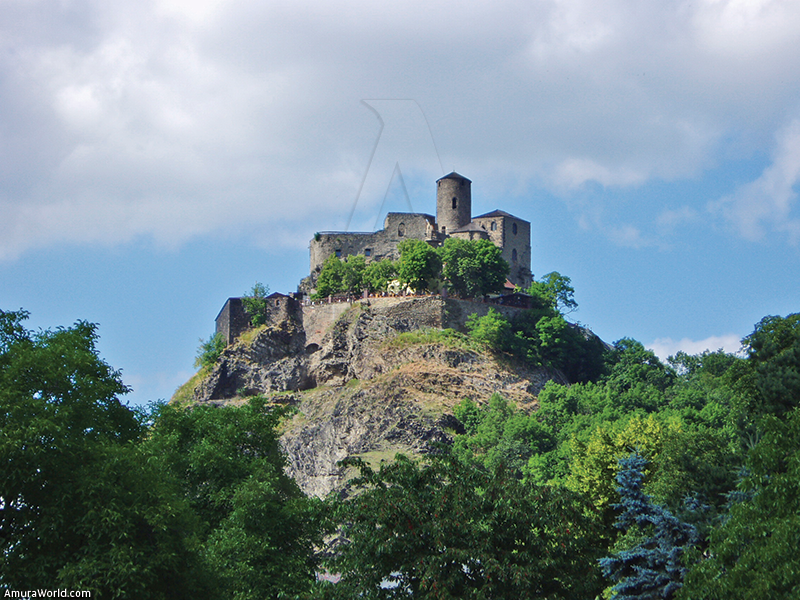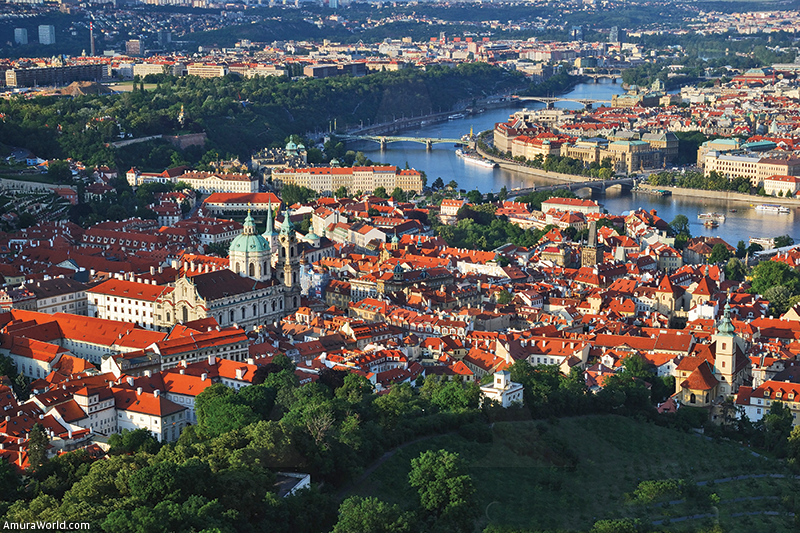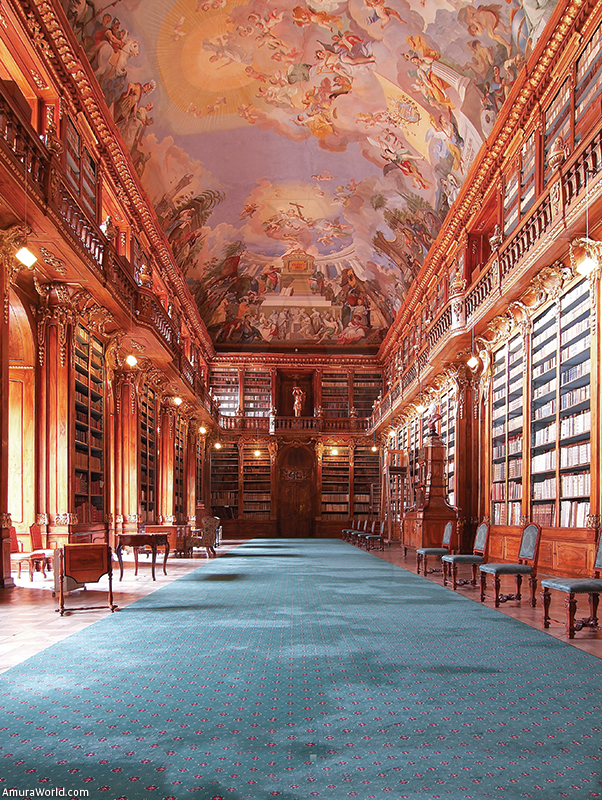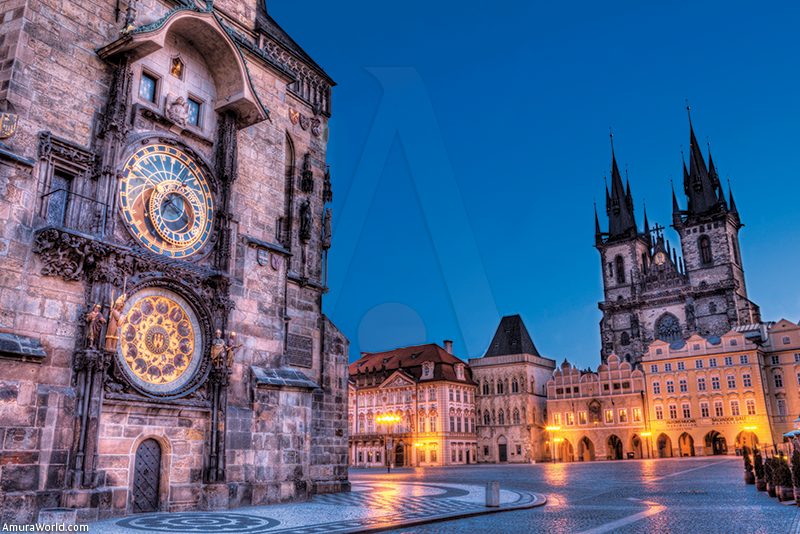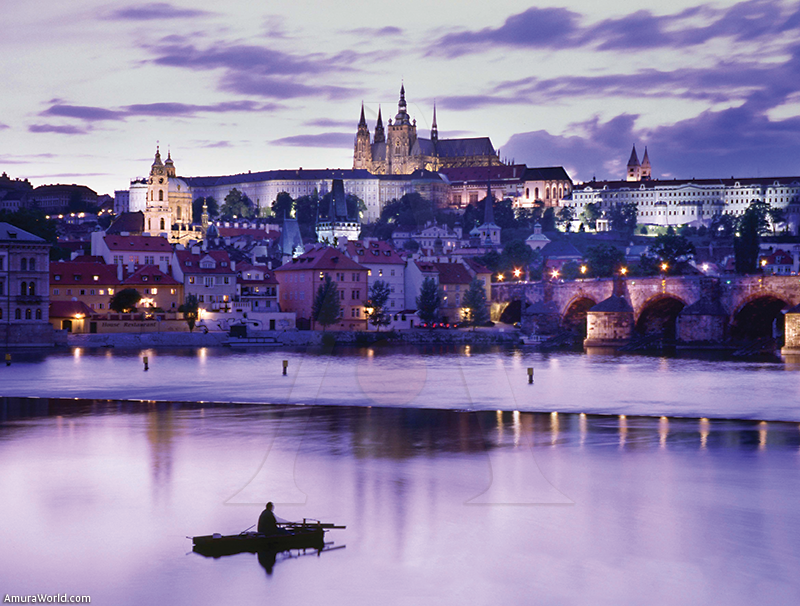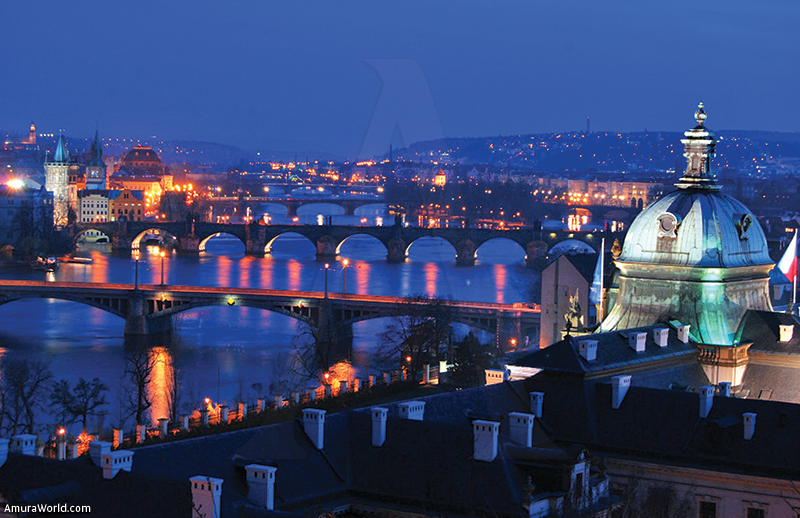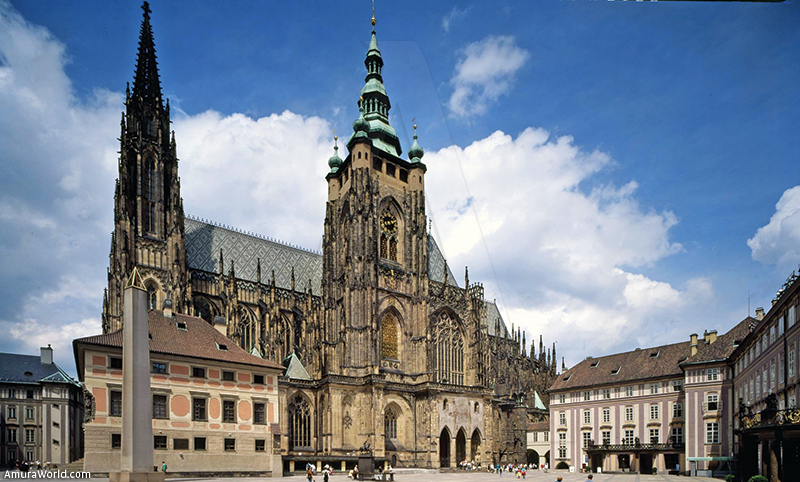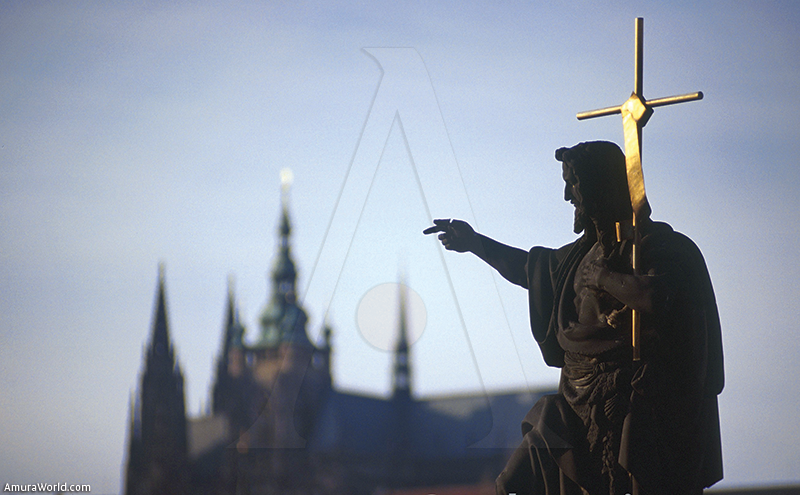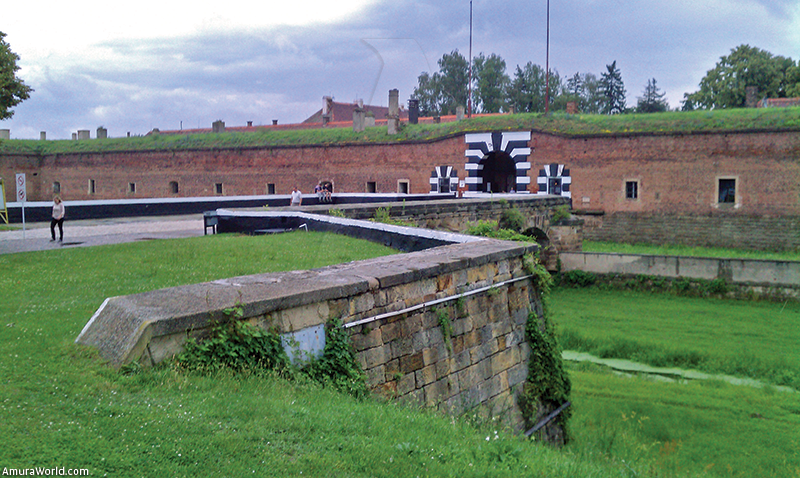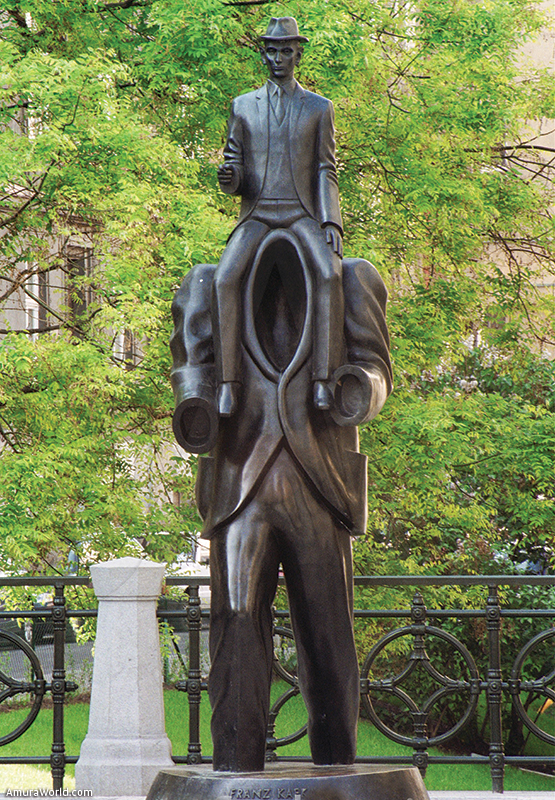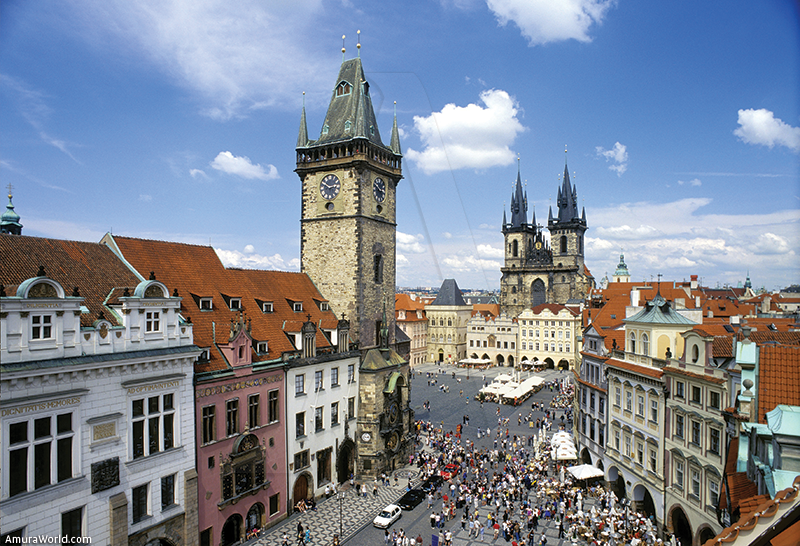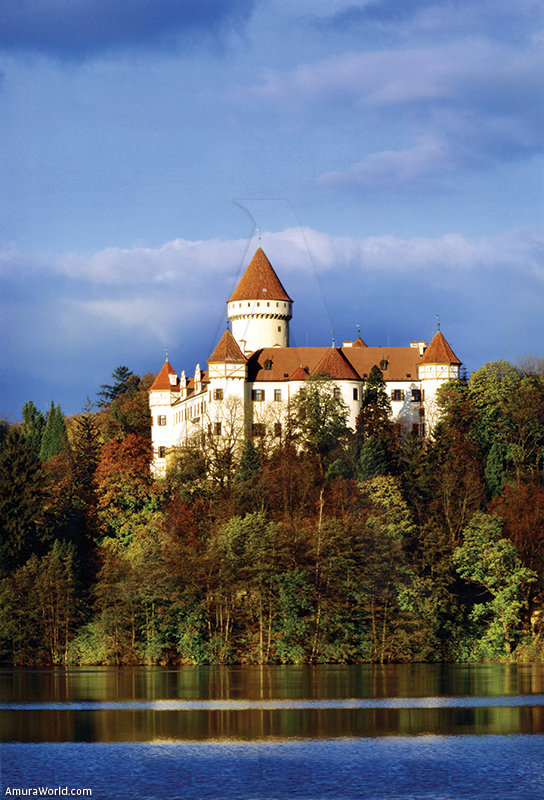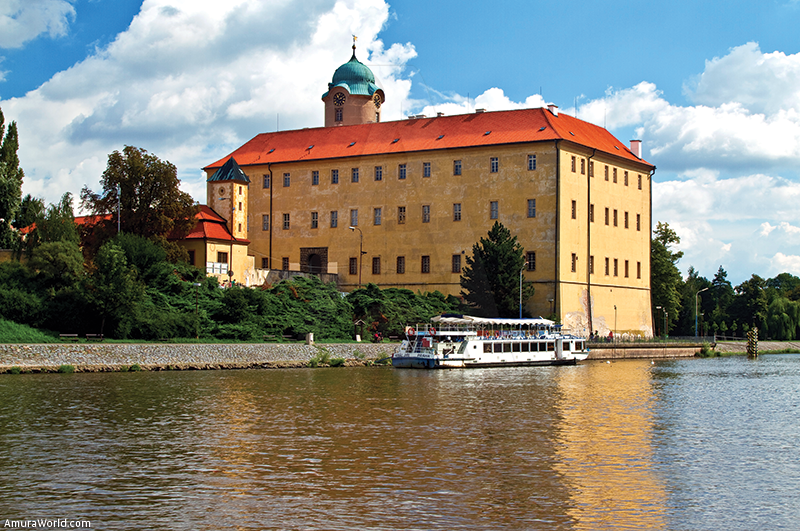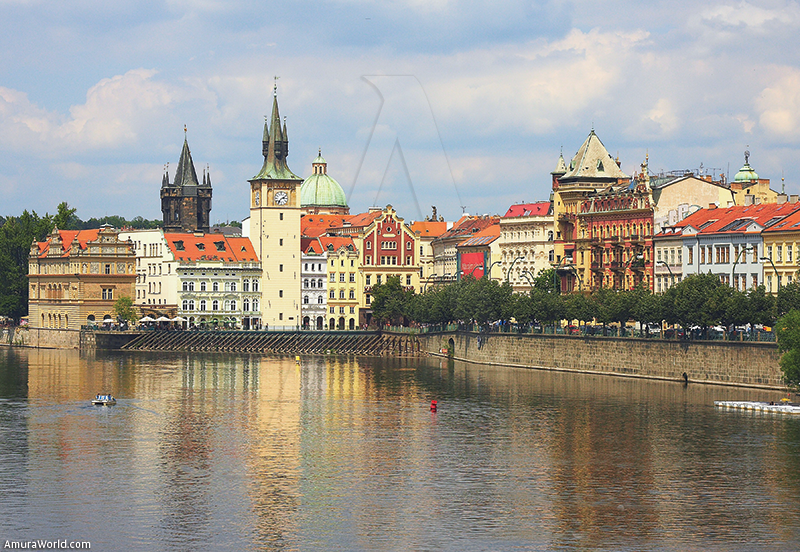Prague, among the most beautiful cities in the world
If wishes came true, I’d be travelling in a carriage through the valleys of Moravia, on the eastern side of what is now known as the Czech Republic, in the woods that crown the western Bohemian hills, and would visit friends at Silesia, up north. The Czech Republic conjures regions with sophisticated names, romantic villages, fascinating castles and imposing churches whose bell-towers watch over the horizons that have been the stage of legendary battles between knights. Through these lands run the Elba, Moldava, and Morava rivers, which have inspires novels filled with courtly love and intrigue. In my carriage I could travel back in time and discover the profound enchantment that animates Prague, where the Czech spirit palpitates; I could roams the streets and find its beautiful women, as well as admiring the monuments.
Intriguing background
“Pravda vítězí” (the truth prevails) is the motto of a country forged in a tempestuous past. The kingdom of Bohemia, rich in gold mines, was unified in the 9th century, and the Czech crown passed in the hands of Ferdinand I of Hapsburg, whose dynasty lasted 400 years. The Czech Republic was part of the Austrian empire, and then of the Austro-Hungarian, suffering greatly during the 30 Years War and the Seven Years War, despite that these turned Bohemia into an economic power.
At the end of World War I, the Czechs joined with the Slovaks, and in 1918 formed Czechoslovakia, a country that was annexed by Hitler in 1938. At the end of World War II, Czechoslovakia became a socialist State aligned with Soviet Russia. The famous “Prague Spring” ended reforms and the sovereignty of the country in 1968 until the “Velvet Revolution” of 1989 separated the country from the Communist block. In 1993 the Czech Republic was formed, separated from the Slovak Republic, and Prague became the beautiful capital city.
The Road to Prague
We had recently finished travelling through Poland, fascinated by sheer volume of history, castles, cathedrals, and exquisite food. After visiting Dresden, in Germany, we entered the Czech Republic through a majestic forest that covers the smooth hillsides and the surrounding countryside. Furthermore, we paid a visit to the romantic castle of hrad Střekov. Located on a rocky headland that rises with elegant simplicity, it dominates the Elba river, a symbol of the city of Usti nad Labem. The building was constructed by the Czech king John of Luxemburg circa 1319 to guarantee the safety of the ships that travelled through the river.
A popular legend states that Richard Wagner composed an opera inside the castle, painting which confirm this fact are allegedly stored there.
From thence, we discovered Teplice, an enchanting town with churches featuring high towers and spiked domes. The streets are wonderful, and are adorned with colourful houses and fountains. Teplice is located in a hollow ground between Krusné Hory, and the central plateau. It is considered as one of the finest health resorts in Europe thanks to its thermal springs which have been known since the time of the Roman Empire.
We chose as a vantage point the terrace of the restaurants that surround the central plaza. The landscape includes a large fountain and the people around it, enjoying peaceful moments inside this enchanting scenery. Its theatre presents operas and ballets that rejuvenate the soul. In short, Teplice is like a prelude to Prague, if Prague was a symphony—and it is, in a way.
Our route crossed through hills of green, and fields of crops that mark the way to Prague. We stopped at Litomerice, ancient city dominated by its cathedral located near the Elba river. We visited the kaple sv. Jiří a Vojtěcha, engrossing chapel crowned with a circular tower, relatively small compared the sprawling forest. We then stopped at Nelahozeves to admire up close the renaissance 16th century castle, which, amongst its many wonders, hold a valuable collection of paintings by Velazquez, Canaletto, and Rubens. We then visited the home of composer Antonin Dvořák.
Once we passed through these Hills, Prague appeared. There she was, it towers and monuments appearing with dignity. On the other side of the Moldava river, ancient capital of Bohemia, the castle conserves its dominion of the hill, and the landscape that was once the heart of the Kingdom of Bohemia.
We lodged ourselves at the Four Seasons hotel, pinnacle of elegance and service contained inside a historic building in the downtown area, next to the river, and close to Charles Bridge. We enjoyed the luxury while we rested for a while before heading to streets to find that city ambience that conserves the energy of the past, the edifier of majestic buildings. We then returned to have dinner at the hotel, enjoying the wonderful views and the excellent cuisine.
Praga: Staré Město, Josefov y Nové Město
Founded in the 9th century with the construction of a castle by Libuše, Prague became the seat of the kings of Bohemia, while King Otakar II founded the neighborhooh of Malá Strana at the edge of the river in the 13th century. The city flourished in the 14th century under the reign Charles IV, who built Charles Bridge. Bohemia then went on to form part of the Hapsburg dominions in 1526; Prague became the capital—which suffered greatly during the Thirty Years War—yet became an important economic power in the 18th and 19th centuries, attracting nobles and merchants who aided in the constructinion churches and palaces. After World War I, invaded by Hitler, Prague assisted in the persecution of Jews and later fell under Soviet control at the end of the war, subjected under its rule until the “Prague Spring” of 1968. The “Velvet Revolution” brought an end to Soviet rule in 1989, and Prague once again became the capital of the newly formed Czech Republic in 1993.
As we left the hotel during a crisp morning, we made our way through the Moldava river to observe the swans that were just awakening to search for food, or, to be more precise, to await for the townsfolk to throw bread into the river. Our tour began in the old part of the city, Staré Město, which is considered to be almost medieval, and were most of the towers of the city are concentrated. Hence, it is now as the “City of a Hundred Towers”. In the downtown are we discovered the Staré Město Plaza, one of the most beautiful in all of Europe, built in the 9th century, when the city began to grow around the castle.
The plaza has a peculiar charm to it, with its three-story houses built in a Bohemian style, painted in rich pastel colors, while the City Hall dominates the plaza. The clock tower features what is perhaps the most famous medieval astronomical clock in the world, built in 1490 by watchmaker Hanus, and perfected by Jan Taborsky in the 16th century. This watch is composed of three parts: The Josef Mánes calendar, on the upper sphere which represents the 12 months of the year in paintings, the Zodiac signs, at the center of the Coat of Arms of the old city, adorned with fours small sculptures (a philosopher, an angel, an astronomer, and an orator); the Astronomical Watch in the upper sphere represents the orbits of the sun and the moon and who these have evolved over time; the animated figures, on the upper circle of the clock, are the main attraction, given the movement of the twelve apostles when the clock rotates. Four additional figures adorned the structure: A Turk, Avarice, Vanity and Death, represented by a skeleton that pulls on a string and prompts the figures to move. After enjoying this marvellous play accompanied by music, we climbed the tower at 9 in the morning to admire the astonishing views: The plaza, the towers of the Church of Our Lady Of Týn, the rooftops of the houses, the castle on the hill, and the medieval streets that slither into the horizon.
The Church of Our Lady of Týn does not, strangely, face the plaza, and it hides its spiked towers behind a row of houses. Built in 1256 over a Romanic church, and rebuilt in the 14th century in a late Gothic style, and finished in the 15th century by the Jesuits. Lighting struck in 1679, which caused a fire, and damaged de cellar. It was rebuilt in a Baroque style then. Its interior is grand, elegant, and mesmerizing.
Heading to the Novomestsky Pivovar restuarant, we tasted the pork meat with bitter coleslaw, an exquisite potato soup, and marvellous cakes, all accompanied with a Pilsner Urquell, the most famous beer in Prague. We were close to the Nové Město (New City) were we strolled around the grand and elegant Wenceslao Plaza, a witness to the great events that unfolded in Prague. Here we found fashionable stores, hotels, restaurants, and the National Museum, built in a neo-renaissance style, which we visited to discover the impressive permanent collection housed there. Close by, we stumbled upon the State Opera, a gorgeous neoclassical building built in 1885. From there we visited the Communist Museum, which narrates the story of Communist rule in Prague, then to the Europa Hotel, built in 1906; The Mucha Museum that displays works of famous Czech artists, housed in the Kaunicky Palace. We parted, and then sat next to the Charles Bridge, Karlův Most, to admire the sunset over the river. It is the most ancient bridge in Prague, finished in the 15th century after construction began in 1357. It is the single most important communication route between the old part of the city and the castle. It is 516 meters in length and rests on 16 arches protected by 3 towers. The city moves back and forth between the bridge, which is at once also filled with merchants and artists, musicians, and living “sculptures” that create a lively atmosphere. The bridge used to serve as a secret passage.
After attending the National Theatre (its interior still conserves red velvet drapes, chandeliers, and a golden stucco) to listen to Libuše de Bedřich Smetanam, we had dinner at U Fleku, the oldest brewery in Prague, were we enjoyed duck accompanied with red coleslaw.
Prague: Malá Strana y Hradčany
Early next day, when the first rays of the sun began to shine over the castle, we crossed the Charles Bridge to enjoy it before the throng of tourists invaded it. The water was calm, stirred from time to time by the passing of ducks and swans. We passed Kampa Island, under the bridge, to visit the Gran Pior Mill, featuring an 8 meter wide grinding wheel. Afterwards, we reached a wall dedicated to John Lennon, which is full of graffiti protesting the Communist regime. It was then that we entered the Malá Strana (small city), founded in 1257 at the foot of the Hradčany, still magnificently conserved. Palaces and houses remain standing despite centuries passing by, untouched by war, simply as they were when first built. We started at the heart of the small city, Malostranské Náměstí, the main plaza where most of the houses are located. We then reached Saint Nicholas, Jesuit church considered as the most beautiful Baroque structure in Prague. Construction began in 1673 and ended in 1752. In its plaza we found the Plague Column, which dates from 1715, the interior stacked with art, from painting to sculptures that almost seem to reach the ceiling.
We discovered as well the Church of Our Lady of Victoria, which houses the famous statue of the Jesus Child of Prague; we then passed through the Vrtba Gardens, and ended close to the Mount Petřín, where the Tower of Petřín is found, the most famous outlook post in the city.
From there, we headed to Hradčany to discover the Castle of Prague, the most ancient part of the city, built in the 9th century as a residence for the kings of Bohemia, and later becoming the residence of the President of the Czech Republic (1918). Passing the main gate, we discovered the Cathedral of Saint Vito, in Gothic style, which houses the crown jewels and the tomb of Wenceslaus IV. We then passed the Golden Alley, a narrow and beautiful street which owes its name to the goldsmiths that inhabited it in the 17th century.
The street is lined on each side by colourful houses built on the walls of the castles to shelter guards, and date all the way back to the 16th century. The house numbered “22” was the home of Franz Kafka between 1916 and 1917, the most famous writer of Bohemia. We continued to walk through the ancient royal Palace, the basilica of Saint George, and the Powder Tower. The gardens inside the palace are wonderful, and concerts are regularly performed in them. After a long visit, we seated ourselves in one of the nearby restaurants to try some local cuisine.
At the side of the lake, we discovered Loreto, one of the most important pilgrimage sites in Prague, which was built in 1626, although the building was acquired in its current state on a later date. In it, we found the supposed replica house where the Annunciation of the Virgin Mary was delivered. The original home is found in Loreto, Italy. This Holy Home was built on the 3rd of June, 1626, and it attracts numerous pilgrims. Inside this building we found the Church of Nativity, a sumptuous edifice that harbours important and sinister relics.
We passed through the Sternberg Palace, which features a large collection of European art, and arrived that the Strahov Monastery, which belongs to the Order of the Mostense, and which was founded in 1143, although its current architecture dates from the 17th century. Inside, the Church of the Assumption of the Virgin Mary, where the remains of Saint Norbert, founder of the Order of the Mostense, and the organ which was played by Mozart during his various visits to Prague. The magnificent library features a theological study area, and a Classical Philosophy wing. Its gallery it’s also one of the most prominent in Europe. Downhill, we reached the Charles Bridge once more, and attended the Black Light Theatre at nightfall, one of the most spectacular shows in Prague, were actors dressed in black stand in front of a darkened screen and only reveal what they are holding in their hands: fluorescent and illuminated objects, as well as floating figures, are some of the elements that make this show special.
Terezín
The next morning, we reached Terezin, 61 km from Prague, by car. It is known for the existence of a World War II-era concentration camp. It is divided into two fortresses, the first being a Jewish ghetto were more than 150,000 Jews lived during the war, and the second is the main forced labour camp. In it one can find the patios, cells, barracks, and even a tunnel in which prisoners were transported. The crematorium provokes a most striking and lasting impression, for it was built next to the cemetery. One can also spot a school here, filled with children’s drawings, and a museum. Our visit to Terezin was filled with angst, for it brings numerous memories of one of the most shameful episodes in human history. To forget this misery and cruelty, we stopped at a nearby restaurant in the countryside, one with an excellent cuisine and agreeable ambience.
Returning to Prague, we visited Vyšehrad, seldom filled with tourist, where we discovered a fortress from the 10th century, the Church of Saint Peter and Saint Paul, remodelled at the end of the 19th century in a Neo-Gothic style. Inside is a park and cemeteries were the remains of numerous famous personages lay.
We finished our day with dinner inside a vessel that travels through the river, enjoying the views of the hills, the towers that scrape the starry sky. It was another romantic moment given by Prague, City of Gold.
Karlovy Vary
We left Prague to discover Karlovy Vary, a town located about 100 km from the capital, also knows as Karlsbad, or “Baths of Charles”. This name was given in honour of the Holy Roman-Germanic Emperor Charles IV, who founded the town in 1370. As we walked through its roads with various types of buildings on the sides, we discovered the thermal springs and baths that made Karlovy Vary a popular tourist destination in the 19th century. The European aristocracy readily travelled to the city to “take in its waters”, which had healing elements.
The Teplá river that passes through the city is also a warm spring, and the city features 13 main springs and a large number of smaller ones. It is a genuine pleasure to walk through the streets and plazas and observe the buildings that seem to compete against each other to see which is more splendid. And yet, to relax in the baths is the great gift afforded by Karlovy Vary; to feel like a prince, or an aristocrat, imagining finding in the very same baths such titans as Goethe, Labitzky, Dvořák, or Stifter, who used to travel to this city in order to heal their wounds. The hotels are as elegant as in previous eras, and the food is fit for a king. There, we also admired the Moser crystal factory, called Crystal of Kings for the high number of objects from the factory that adorned royal houses. We brought some dried rose petals to take as souvenirs, as well as some local china. Karlovy Vary is a fine place for the senses, a treasure hidden near Prague that also hosts an important film festival yearly.
As we departed, the City of Gold bid us adieu with the music from the clock-tower; it was noon, and the sun was shining, while the melody seemed to slide of the rooftops. Violins, guitars, trumpets, and other romantic sounds filled the air. In spite of the blows suffered during its existence, Prague is a city that admires its past and shines, its monuments standing to impress men and women alike. Churches, palaces, and homes display their beauty, the museums intrigue, and Prague continues to beat with the heart of the old Bohemia with a voice that captivates.
Text: Patrick Monney ± Photo: CZECH tourism / Four Seasons



